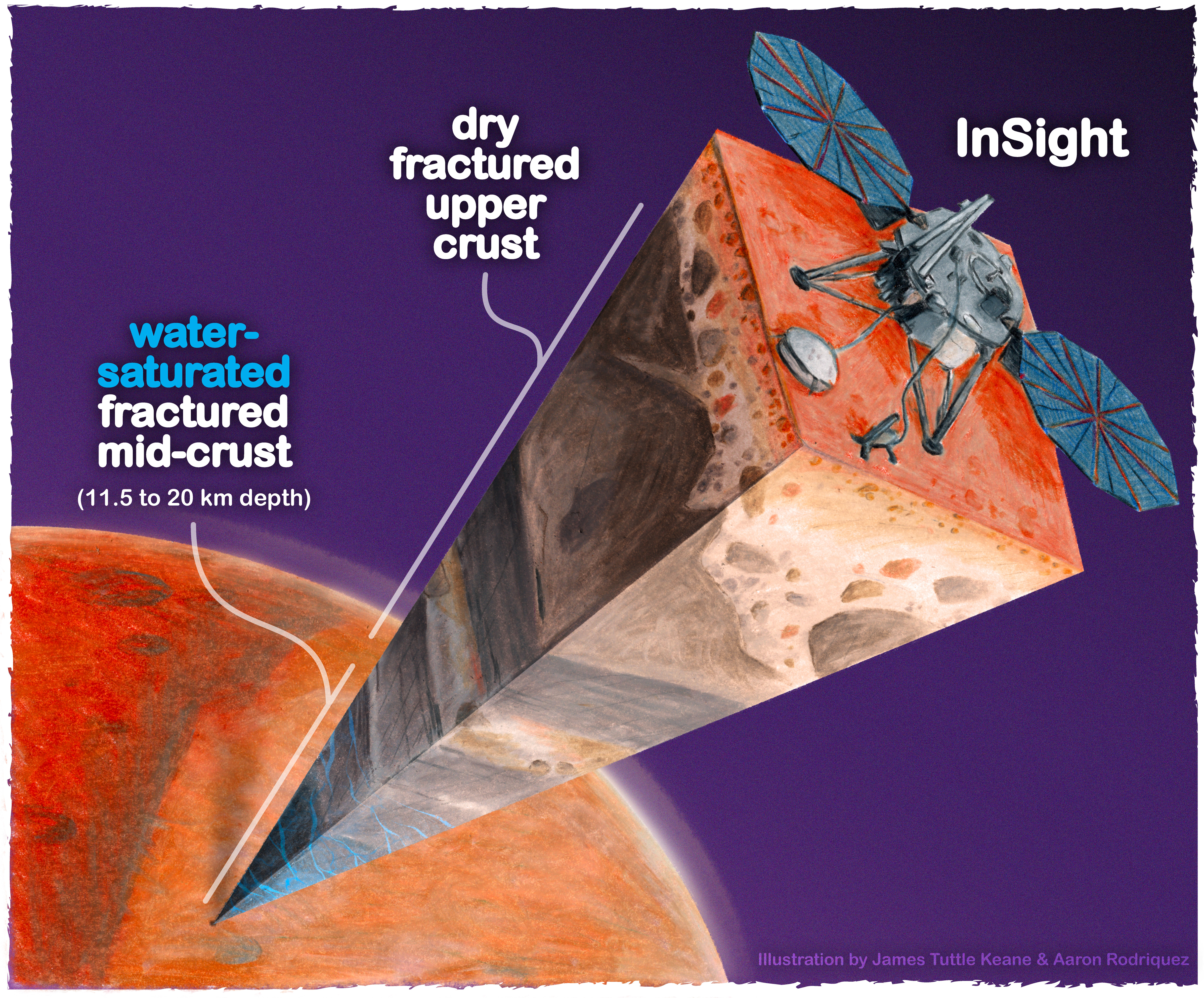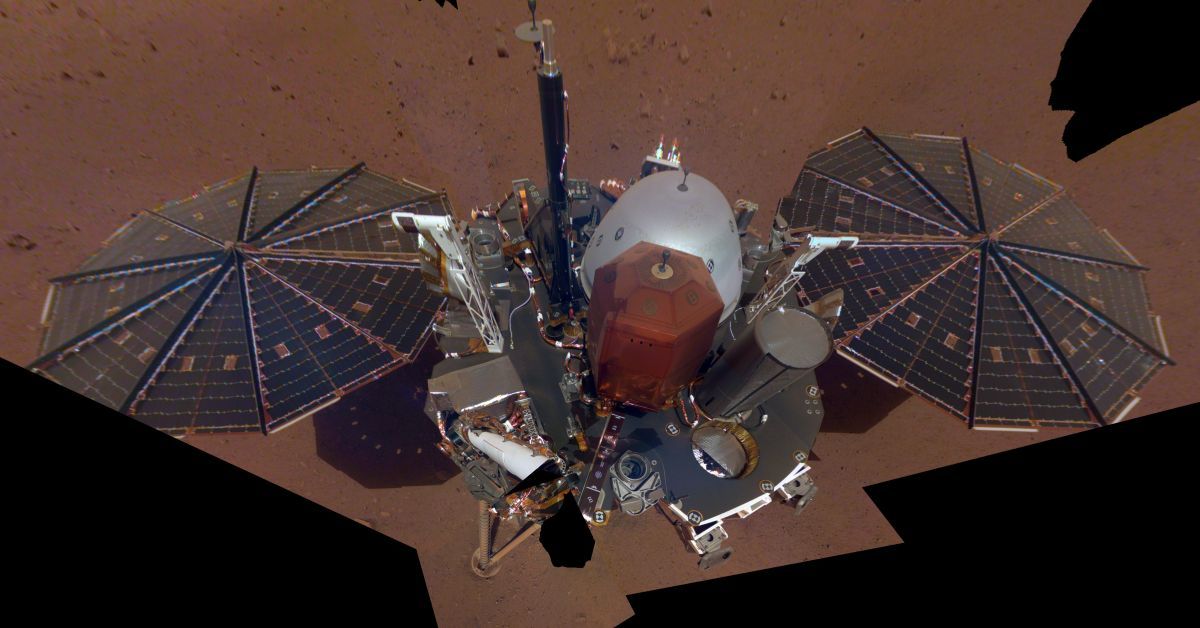Presence of Liquid Water Most Probable Explanation for Data Collected by Mars Lander
Researchers infer that stores of water must exist in planet’s crust
Story by:
Published Date
Article Content
Data about Mars’ planetary crust gathered from the Mars InSight lander are best explained by the conclusion that the crust has stores of liquid water.
Analysis led by Vashan Wright, a geophysicist at UC San Diego’s Scripps Institution of Oceanography, provides the best evidence to date that the planet still has liquid water in addition to that frozen at its poles. If that conclusion is true, it sets the stage for new research considering the planet’s habitability and continuing a search for life that exists on a place other than Earth. The potential presence of liquid water on Mars has tantalized scientists for decades. Water is essential for a habitable planet.
“Understanding the Martian water cycle is critical for understanding the evolution of the climate, surface, and interior,” Wright said. “A useful starting point is to identify where water is and how much is there.”

The study appears the week of Aug. 12 in the journal Proceedings of the National Academy of Sciences. The Canadian Institute for Advanced Research, the National Science Foundation and the US Office of Naval Research supported the work. Besides Wright, study authors are Matthias Morzfeld from Scripps Oceanography and Michael Manga from the University of California Berkeley.
Wright’s team used data that InSight collected during a four-year mission ending in 2022. The lander collected information from the ground directly beneath it on variables such as the speed of Marsquake waves from which scientists can infer what substances reside beneath the surface. The data were fed into a model informed by a mathematical theory of rock physics. From it, the researchers determined that the presence of liquid water in the crust most plausibly explained the data.
“While available data are best explained by a water-saturated mid-crust, our results highlight the value of geophysical measurements and better constraints on the mineralogy and composition of Mars’ crust,” the authors wrote.
Share This:
Stay in the Know
Keep up with all the latest from UC San Diego. Subscribe to the newsletter today.




